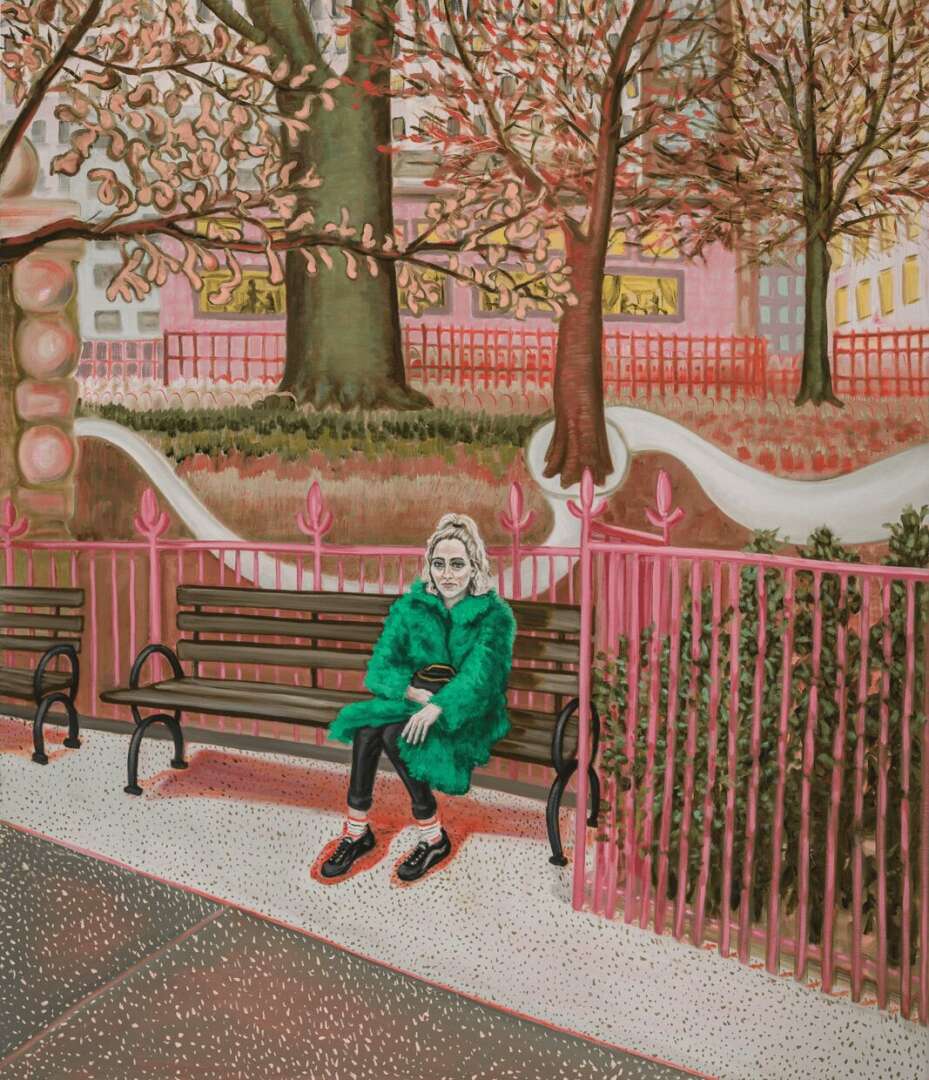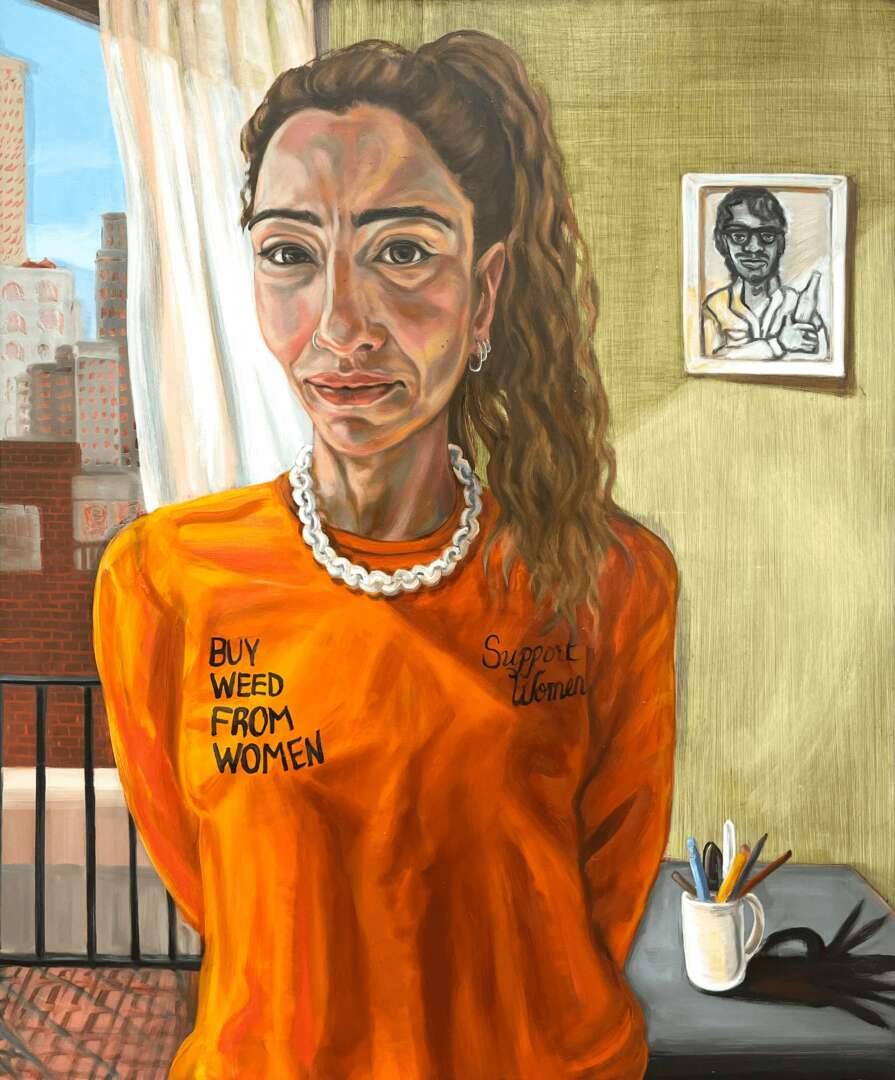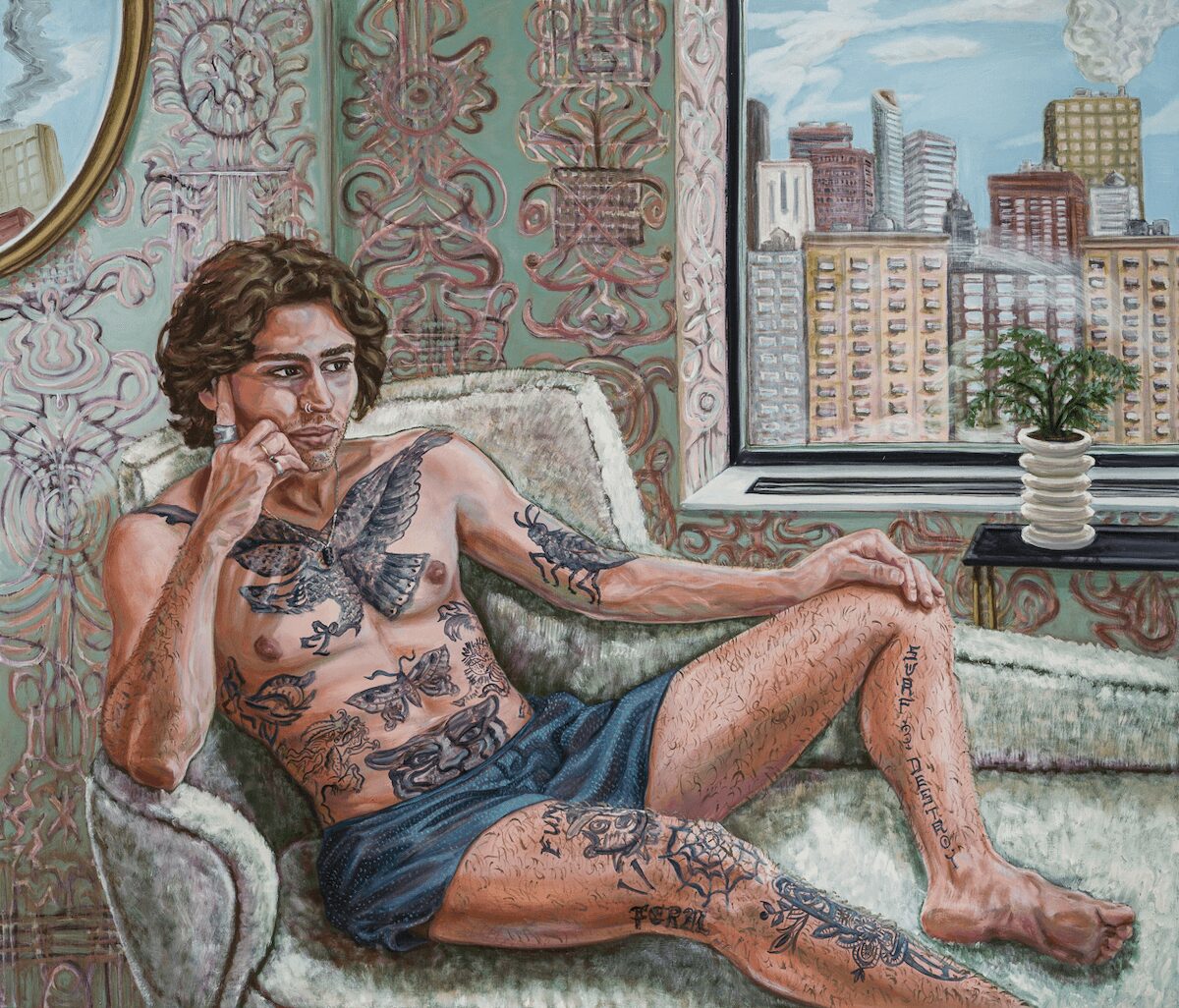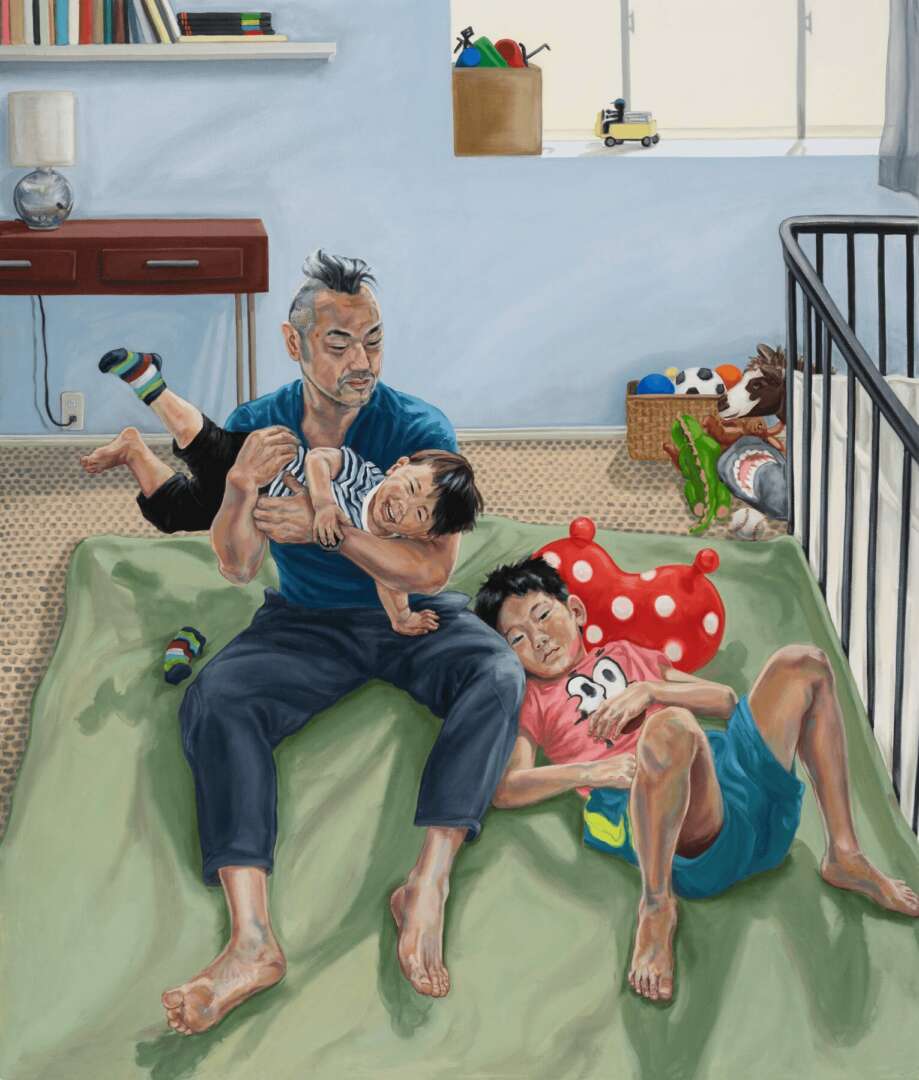Alright – so today we’ve got the honor of introducing you to Patty Horing Artist. We think you’ll enjoy our conversation, we’ve shared it below.
Patty Horing, thanks for joining us, excited to have you contributing your stories and insights. We’d love to hear about when you first realized that you wanted to pursue a creative path professionally.
I was a late bloomer artistically. I started making art after leaving a PR career to raise my 2 children full time. What began as a hobby quickly became a passion and an obsession, but it took several years for me to come to terms with feelings of ambition and my growing desire to show the work. After years of working from a suburban home studio while my kids were in school, and honing my practice to focus on psychological portraiture, I realized that in order to take my work to the next level I needed to be part of a community of other artists. I spent a year doing informational interviews with friends of friends in the art world to figure out how go about finding that community, and ultimately went back to school. I pursued my MFA at the New York Academy of Art, where I learned all the techniques I didn’t know I didn’t know, and met a wonderful group of artists, Coming out of school I was picked up by Anna Zorina Gallery, where I have had three solo shows since 2017, and which continues to represent me.


Great, appreciate you sharing that with us. Before we ask you to share more of your insights, can you take a moment to introduce yourself and how you got to where you are today to our readers.
I am a painter whose artistic focus is paintings of people. I am interested in the narrative and psychological nature of portraiture. Contemporary paintings of specific people simultaneously raise questions and offer clues about individual identity and the larger cultural context in which the subjects exist. My goal is not simply to show what a person looks like, but to examine, through subjective interpretation, who that person is, wants to be, has been. Often the subjects’ material surroundings also reflect some aspect of personal desire or identity that is linked to the psychological underpinning of the portrait.
By conveying a feeling for both the inner and outer lives of individuals through expressionistic portraiture, I hope to access a deeper underlying current of relatable human experience.


In your view, what can society to do to best support artists, creatives and a thriving creative ecosystem?
I came to art-making later in my life, when I was in the extremely rare and lucky position of having the time and head-space to make art, but not needing to make a living from it immediately. All artists need such time and space to experiment, discover, and hone their craft. Residencies offer a great short term opportunities, but many people simply can’t leave jobs to experience this kind of artistic freedom. More government funding, subsidized live/work studio spaces, and low-cost collective studios could help give artists day-to-day support for their work. Integrating an art practice into daily life is hard no matter what — it takes self-discipline, commitment, and many, many hours to create a body of work. So anything individuals and communities can do to create the circumstances that make that pursuit not just acceptable, but important, and encouraged, would make a big difference.


For you, what’s the most rewarding aspect of being a creative?
For me, there are two “most rewarding” things. First is the satisfaction that comes from making a tangible work that holds meaning and is a record of your thinking, process, and time. Achieving that flow state when you are totally engaged in the making of a work, seeing what’s there and reacting to it again and again and again, is a form of bliss. I think of it as continuously and simultaneously creating and solving your own sets of challenges, Nothing is more fun for me than being in that zone. The unexpected other reward is being part of an ever-changing community of artists. Through art I have met many of my favorite people. There’s an easy connection that is often emotional as well as intellectual. Art seems to break through some of the usual social barriers between people, so you encounter the core self more readily. And living in New York, there are unlimited number of opportunities to look at and talk about art!
Contact Info:
- Website: https://pattyhoring.com
- Instagram: @pattyhoring


Image Credits
Photos of art: Paul Takeuchi
Studio shot of Patty Horing: Ania Fedisz


